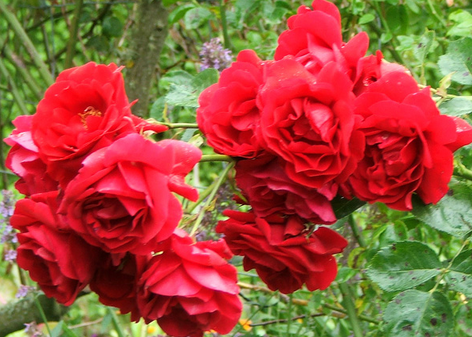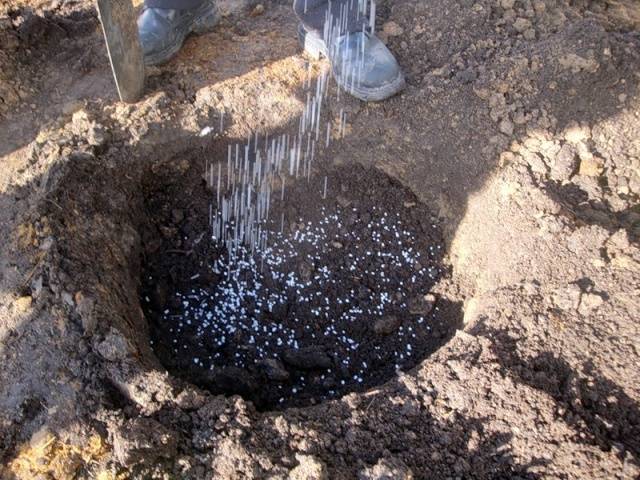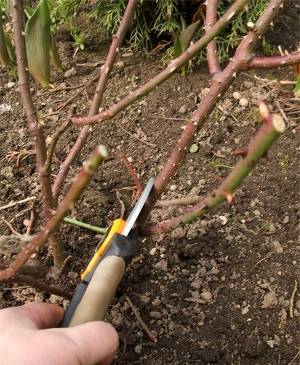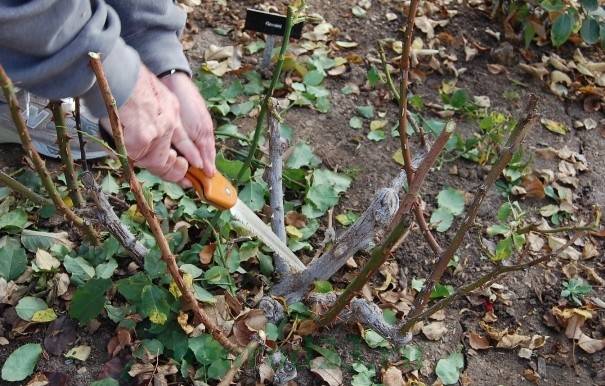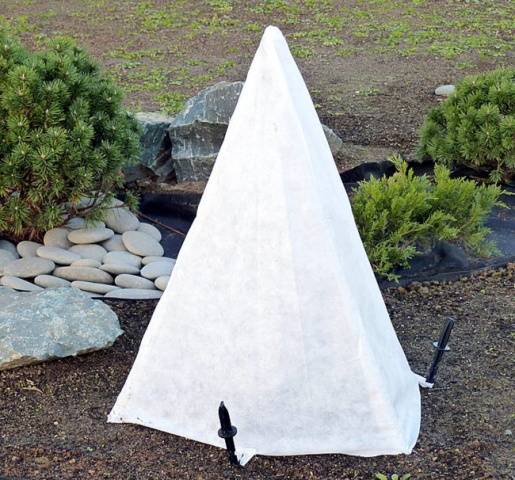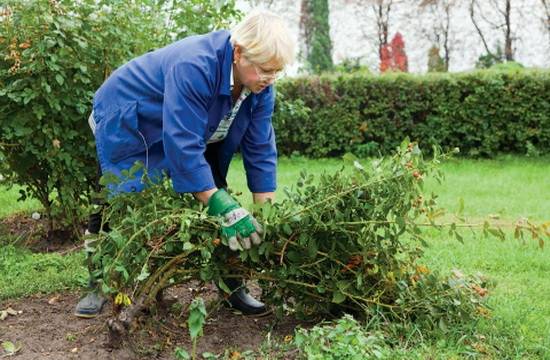Content
Climbing roses most often found in flower beds of many flower growers. These flowers are striking in their splendor and beauty. But not all varieties are quite unpretentious in terms of conditions and care. One of the long-loved varieties is the Sympathy rose. This plant is a tall bush with large deep red double flowers. Its beauty and ease of growing have made it one of the most popular rose varieties. It is worth figuring out what is the peculiarity of this variety and how to grow it.
Description of climbing rose "Sympathy"
The flowers of this variety of roses have a beautiful deep red hue and dark green large leaves. The size of the flowers is about 10 cm. They are velvety, double, and make up large inflorescences. Roses have a pleasant, pronounced aroma. Each flower consists of 19-21 petals. The variety is not afraid of rains, is resistant to temperature changes, and is adapted to different weather conditions.
The flowering period is long. The first flowering is the most abundant, starting from the second week of June. Further, there are fewer flowers on the bush, but they will appear until autumn. Sympathy bush is rather tall, can reach from 2 m to 4 m in height. It is very branchy, but at the same time strong and hardy. Not afraid of low temperatures, tolerates winter well, resistant to strong winds.
Preparing for landing
The first thing to do before planting is to choose a suitable site. For good growth and flowering, it is very important what the conditions will be, as well as the composition of the soil. The place for the landing of Sympathy is chosen sunny, preferably on the south side of the site. It should be well ventilated and, if possible, covered by buildings or plants on the north side.
In order for the rose to grow well, you should choose a soil with the following characteristics:
- loamy;
- breathable;
- with weak acidity;
- wet;
- with a high content of mineral fertilizers.
You need to start preparing the soil a month before planting. Careful soil treatment will help the plant to take root and grow faster. Various mineral fertilizers should be added to the soil. Their selection in specialized stores is more than sufficient.
Planting and caring for a climbing rose
To plant the Sympathy variety, you do not need to allocate a large area in your flower bed. The main volume of the plant will be at the top on the supports. Preliminarily, shallow pits are dug in the soil. The day before planting, a large amount of water is poured into it, and mineral fertilizers are also applied. Now a seedling is placed there and gradually covered with earth, slightly tamping it. After that, the bush will need to be cut.
Like other roses, Sympathy needs watering, feeding, weeding and pruning regularly. After the first watering, it is better to mulch the soil, this will help to retain moisture longer, and will not allow the soil to dry out. The bush does not need frequent watering, just 1 time for 10-15 days is enough. The first 2 years, mineral fertilizers do not need to be applied, feeding is done starting from the age of three. Up to 3 years old, you can use the flower mixture as a top dressing for roses.
In the spring, it is necessary to cut off all weak and damaged branches from the rose.Then from time to time you need to monitor the formation of the bush, cutting off thickened and too branched shoots. When the first flowering has passed, all dried flowers should be removed from the bush. Thus, the bush will get ready for the next flowering and rejuvenate.
To fertilize the soil, you can use not only mineral, but also organic fertilizers. Most often, ordinary manure is taken for these purposes. It is very important to use feeding sparingly. For the whole season, it will be enough to fertilize the soil 2 or 3 times.
Pests and diseases of roses
Most often, a rose can be susceptible to diseases such as powdery mildew and kiniothyrium. When affected by dew, white spots are formed on the leaves, which can gradually increase in size. Hot and humid weather is an excellent time for the fungus to grow. Due to the defeat, the rose stops growing, and gradually begins to die. As a prophylaxis of the disease, you can spray the bush with Bordeaux liquid. The first procedure is carried out even on the unblown kidneys, immediately after the shelter has been removed. The next spraying of the bush should be carried out at a time when young shoots will grow up to 20 centimeters in length.
Kiniothyrium or, in other words, rose burn or bark cancer. This disease can appear imperceptibly, usually it is revealed after the shelter has been removed. In the early stages, you can see how brown spots with a red tint appear on the bark. Gradually, they grow and change color to black. It is more difficult to get rid of this disease, since the fungus is located inside the tissues. To save the bush, you will have to cut off all affected branches, capturing the healthy part of the branch. Cut off shoots must be burned. For prevention, in the fall, the bushes are fertilized with fertilizers containing potassium. It is very important to cover the bush in time, but so that the air gets inside freely.
Preparing roses for winter
You need to prepare a shelter for the winter in advance. It should be dense so that no cold winds and frosts can damage the bush.
Shelter can also kill your flowers if used in the wrong way. Due to poor access to fresh air, the bush can overheat. Also, during spring rains, the plant may get wet. It is important to ensure that the soil is not too compacted and that the air is permeable. Heavy soil retains moisture for a long time, which is why the bush can be affected by fungal diseases.
The rose should be covered only at a very low temperature, which has been holding for several days. Small frosts are not terrible for the bush, but can, on the contrary, harden it and make it even stronger. At the end of summer, it is necessary to stop watering the rose. During this period, the earth will not dry out in the scorching sun, and precipitation and dew will be quite enough to obtain the required amount of moisture.
Before the start of frost, Sympathy is removed from the supports and they begin to prune the bush. First, rotten and damaged shoots are cut off. Next, you need to remove all dry leaves from the plant. Now the rose bush, ready for winter, is twisted, tied and fastened to the ground. Before this, the soil is carefully covered with dry foliage. From above, the rose also needs to be well covered. For this, leaves, wooden boards, plywood and other materials are used.
Reproduction of roses
This variety of roses is easy propagate by cuttings... Sturdy winter cuttings are suitable for this, but summer cuttings can also be used. When propagated by green cuttings, a high percentage of rooting can be achieved. Climbing roses themselves can root well without the use of special tools.
When cutting a stem from a rose, you need to make the correct oblique cut. All leaves must be removed from the bottom of the cutting. Next, the branch is placed in a mixture of soil and sand. The next step is to move the cuttings to the pot for further growth. From above it should be covered with a regular jar to create greenhouse conditions. The rose needs to be watered regularly. That's all, the seedling for planting in open ground is ready.
Conclusion
The Sympathy rose variety is incredibly common. Many flower growers love it and happily grow it. These roses are incredibly beautiful and simply mesmerize with their depth of color. Due to the height of the bushes, roses can be used for landscaping buildings, fences, and even grown as a hedge. They are unpretentious, and easily tolerate frost and wind. Like all roses, Sympathy needs some care, but the effort is worth it. Over time, the plant will develop into a lush and luxurious bush that will become the centerpiece of your garden.
